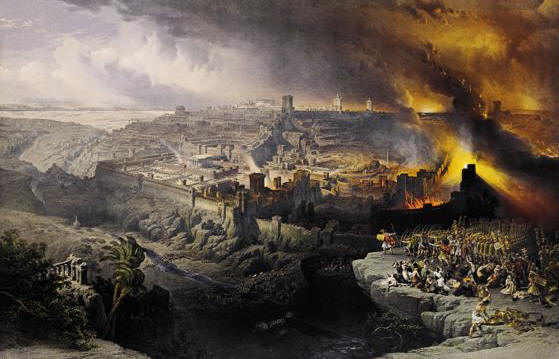Are we living through the Great Tribulation right now?
What is the Great Tribulation? This post is moderately brief. It will lay some groundwork for later articles.
The Great Tribulation is a seven-year period during which God pours out his wrath on an unbelieving world. That’s a simple definition. Many people believe it’s only three and a half years. I’ll address that and other issues in future articles.
But in this article, I want to focus the reader’s attention somewhere else. There are ideas regarding the Great Tribulation that many Bible students probably aren’t aware of.
Such as the following.
Great Tribulation errors among the Church
Large portions of the Christian Churches around the world believe the Great Tribulation is taking place right now. That’s not to suggest they believe the Antichrist is ruling. Or that Christ is a few years away from returning. But actually, they believe the tribulation has been ongoing since 70 AD. That’s an absurd idea for some, but for others, it’s Gospel truth. I lean toward the thinking that it’s absurd.
I believe that the Great Tribulation is a future event. A recent post by Alan Kurshner got me thinking I should draw some attention to this subject.
Is the Rapture ‘Pre-wrath’ during the Great Tribulation?
Here’s the post from Alan Kurshner. (Here) He starts by asking the question, “Does the Great Tribulation span the entire Church age?”
Alan’s views are very controversial, but so were Jesus’. Jesus’ views got him crucified. Hopefully, Alan will see a better fate. Just having fun with Alan. 🙂 He takes a minority position on Bible prophecy, but it is drawing increasingly favorable opinions. His view is called Pre-wrath.
We disagree on several points but I respect his scholarly work in the field. I think he stands on much firmer scriptural grounds than many teachers from the numerous mainline denominations around the world.
Below is a brief article from gotquestions.org
Historicism, it’s a term you should know
In theology, historicism is an approach to eschatology and prophecy in general.
In historicism, biblical prophecies are interpreted as representative of literal historical events. Historicism looks at the whole of Bible prophecy as a sweeping overview of church history, from Pentecost to the end times. This approach involves interpreting symbols or figures in the Bible as metaphors for actual events, nations, or persons of history. Historicism was especially popular during the Reformation, when it was used to suggest that the Catholic Church was part of the end-times apostasy, with the pope as the Antichrist.
The Great Tribulation according to differing views
Historicism as distinguished from other views of eschatology:
Idealism (the events of Revelation are entirely symbolic of the cosmic struggle between good and evil). Preterism (the events of Revelation were fulfilled in AD 70). Futurism (the events of Revelation await a future, end-times fulfillment during the tribulation and beyond). Historicism falls between preterism and futurism in its approach. According to historicism, most of Revelation is symbolic of persons and events in world history. The book of Revelation was prophecy when John wrote it, according to historicists, but most of the book has already been fulfilled in our day.
How is the Great Tribulation different from the Book of Revelation?
Here are some examples of how historicism usually interprets events in Revelation:
The seven churches in Revelation 2–3 are symbolic of seven ages of church history, starting with the apostolic church (the church of Ephesus) and ending with the modern-day, lukewarm church (the church of Laodicea).
The seals in chapters 4—7 represent the decline and fall of the Roman Empire.
The “little scroll” given to John in chapter 10 is a picture of the Protestant Reformation.
The beasts of chapters 12 and 13 represent Catholicism and the papacy.
Other passages in Revelation are linked to the invasion of the Huns, the spread of Islam, and the rise of the modern missionary movement.
How does this affect rapture timing?
Historicism has varied applications to the concepts of rapture, tribulation, and the second coming of Christ.
In some cases, historicism has been abused by those attempting to predict a specific date for the return of Jesus, such as the Millerites in 1844 and Harold Camping in 1994 and 2011.
As one would expect, all such attempts at pinpointing the return of Christ have failed, and they will continue to fail (see Matthew 24:36).
The symbols are all mixed up
Historicism, so popular with the Reformers, remained a dominant perspective on eschatology through the 19th century. However, due to its nebulous interpretation method (no two historicists agree on what symbols go with what historical events) and the fact that John’s original readers could not have understood the book of Revelation in a historicist manner, the historicist view is not widely held today.
I am curious to know what your position is. Do you hold the majority position? Is that the correct position?

More articles related to the Great tribulation
The Great Tribulation: Olivet Discourse: worse time ever
Prewrath: A Very Short Introduction to the Great Tribulation
The Church In The Tribulation?
The Roman Road is for those still looking for a secure foothold in life.

Let me know what you think.